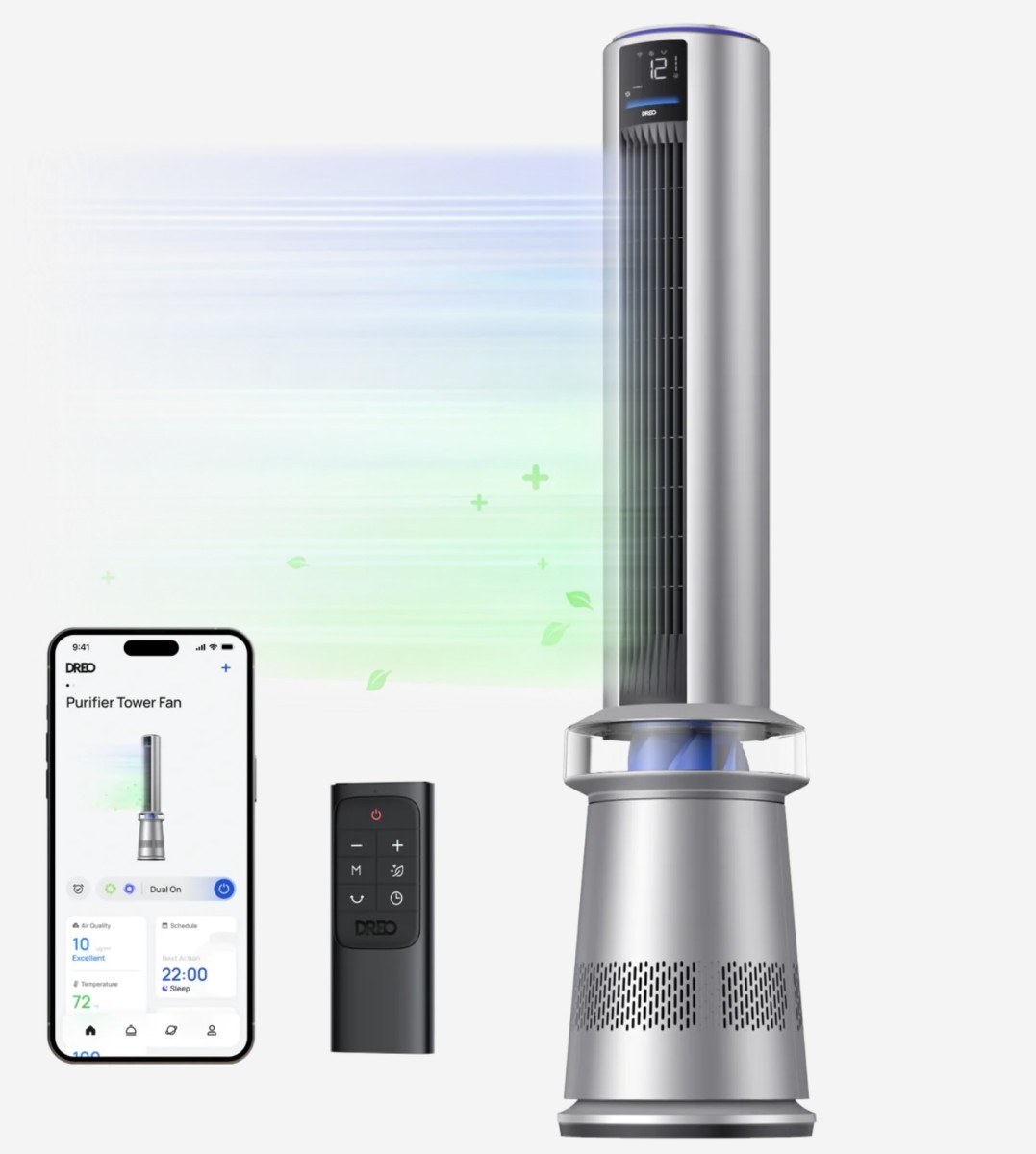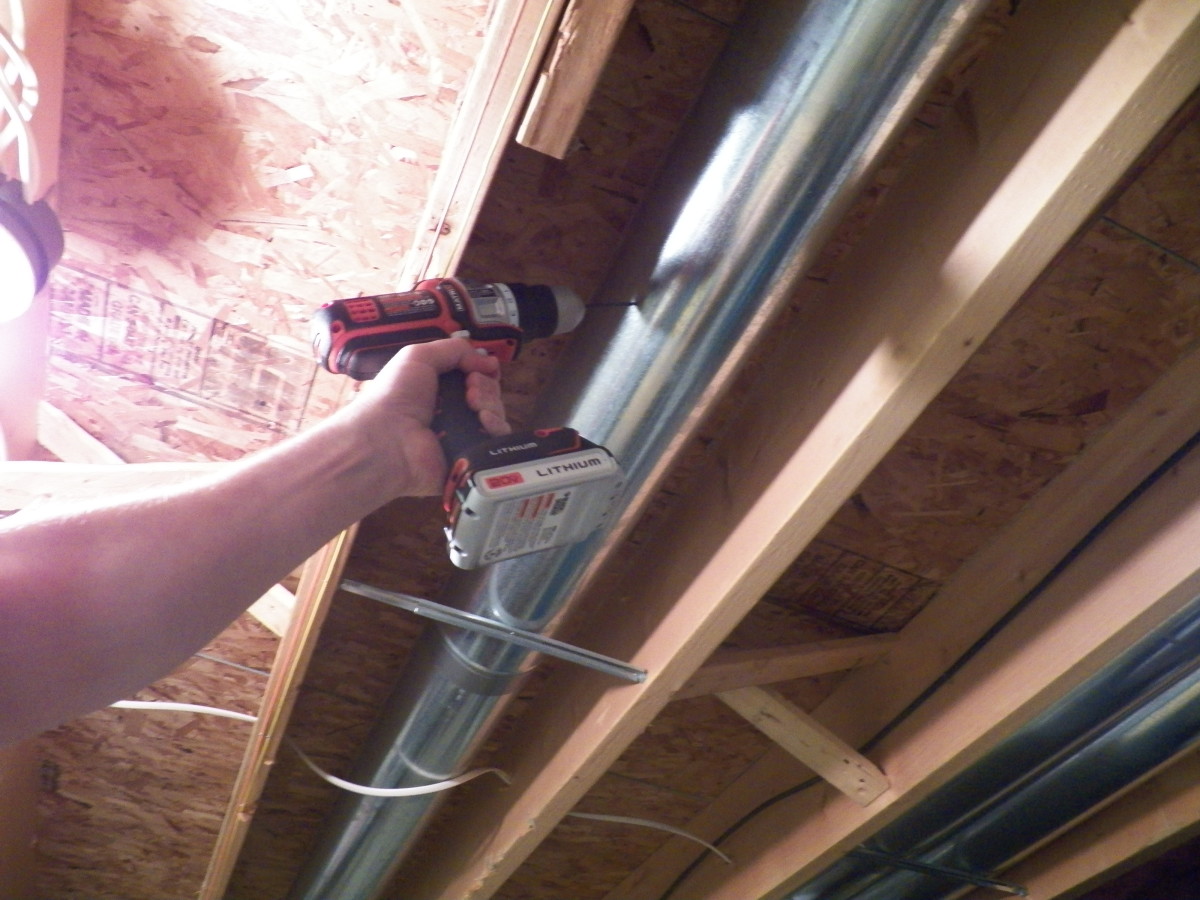Spring or Summer Home Air Conditioning Tune Up Checklist
Spring Is Here, Is Your Air Conditioner Ready?
Hello everyone, Spring is in the air, and here in North East Texas we've already had a couple of days where some have ran their home's air conditioning equipment, and the one thing that is absolutely certain is that the air conditioners of the homes of the great state of Texas will soon be either running much more often, or non stop, or there will be a tremendous desire to have them repaired in order to do so. It's going to get hot out there, and we are all going to be hoping that our equipment is ready and able to keep up with our comfort demands, and the heat from a relentless Sun.
Whether or not you employee the services of an hvac service mechanic in order to see to it that your home air conditioning equipment is up to par, or not, I do not know, but a Spring tune up is a valuable and often times a money saving expenditure well worth investing in. Surely, if you had brand new equipment installed in the latter part of the last Summer, then you shouldn't have to worry, but even then, sometimes a service agreement from the installation company is a part of the package. If you don't have new equipment, then I just can't stress enough how valuable having your home's air conditioning system(s) gone over by a qualified and well trained pro can be for you.
Some Basics Concerning How Air Conditioners Work
Why Do You Need A Spring Tune Up?
Early on in the Spring, the level of heat load on your home is not as high as it will be in the "dog days" of Summer. Obviously, the reason for this is that it's not as hot outside yet as it will be in July, August, and September. What happens then is that a homeowner could be tricked into thinking that everything is working fine, while the truth of the matter is that there are serious problems that will, if left undiagnosed and unresolved - lead to much more expensive repairs having to be made later on in the Summer when you REALLY need your home's air conditioning working at peak performance. In a nutshell, this is the reason why it is very worthwhile to either have a service contract with a licensed and reputable HVAC company, or to just call one out for a Spring tune up.
A Standard Heating and Air Conditioning Contractor's Spring Tune Up Advertisement
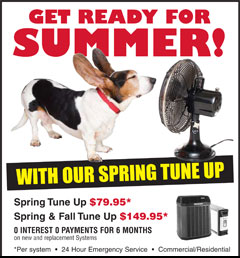
Concerning Prices For Services, and Your Air Filters
It's important to note that prices for services, like those in the picture above, are typically representative of what is charged for the services only, AND THOSE PRICES USUALLY DO NOT INCLUDE ANY PARTS OR REFRIGERANT. The other important thing to realize is that those prices represent what is typically charged for a home with ONE central heating and air conditioning system. Logically, you should then realize that should you have a larger home with several systems, then the price for a service technician to look over several systems is going to be considerably higher.
Advertising is expensive. In no way is an air conditioning company trying to get over on, or mislead anyone by advertising in this way. If someone takes the time to read the small print, or ask sufficient and educated consumer questions on the phone during scheduling, then I assure you that you won't be shocked by anything when it comes time to pay the bill for your service call/ Spring tune up. Two years ago in Dallas, Texas; I did a tune up for the home of a man who was the Chief Executive Officer of some huge medical supply company. The man's home was the size of a D.I.S.D. elementary school, and he had at or around TWENTY of the most expensive split central heating and air conditioning systems that money could buy. I assure you that no sane or reasonable person would have thought that that job should cost the same as it would for a home that was 2,000 square feet.
Another very important thing to know is that you are responsible for your heating and air conditioning system's filters, unless, of course, you've entered into a service agreement that specifies otherwise. There are four typical sizes for indoor air filters, and a service mechanic will sometimes have those in stock on his service truck. There are, however, so many shapes, sizes, and kinds of air filters that only a mechanic driving a commercial truck, and pulling a 53 foot commercial trailer could possibly come prepared with ONE of them all.
The price of your filter could be anywhere from $1.50, for a cheap, standard sized fiberglass filter - on up to $100.00, for a high MERV four inch thick one that should last six months to a year, and all points in between. Typically, an a.c company doubles the price of the filter for your invoice. This is not the least bit unfair to you, as it costs time and money to get these filters, have them on the truck for YOUR home, and to install them so that you do not have to do it. The more expensive the air filter is, the more likely it is that it had to be ordered from somewhere. You should always keep these things in mind, and unless you are physically unable, then you should definitely be changing your own filters, and NOT complaining about the cost of them when it comes time to pay your bill.
If you think that I'm going on and on about air filters a bit much, then I assure you that I've not talked about the importance of air filters nearly enough.
Choosing An HVAC Service Company
The biggest part of a homeowner's success in dealing with hvac issues is choosing an honest, respectable service company. Lets face it, hvac companies and technicians often have a horrible reputation when it comes to both honesty and integrity. Sometimes this bad reputation is well deserved, but sometimes it just isn't. The root of this problem is that most people know exactly nothing about how their air conditioning works, and so, there is often an element of trust lacking in the relationship, and this is based in ignorance. By the same token, the few shady contractors and business owners out there give the good ones a very un deserved derision.
Literally, working for the single most honest contractor that I've ever known, I've had a customer interrupt me and say,
"Look, I just don't believe anything you, or any other air conditioning guy says, ever ."
Literally, the secret here is knowing that word of mouth is the best way to find the best services not only for hvac service, but for any service. You can put the phone book away, what you should do is talk to a neighbor, or someone you know and trust locally, someone who has been in the area for a while. Ask such a person who they use, and if they were happy with the service, the cost, and if they felt like they were treated fairly. THAT is how you choose your HVAC contractor or service company. If you ask ten people, and any three of them give you the same names, then you ought to pay attention to what you are being told. I think that this is good advice I'm giving you here. I know that it is.
Requesting a Technician That You Are Familiar With
Of course if you, the homeowner, have been using the same service company for many years, then chances are that you already know exactly who, or maybe you know which of three or so service mechanics from that company will be coming to your home for a visit. Let me clue you in here on a little secret, YOU CAN REQUEST A MECHANIC THAT YOU ALREADY KNOW, AND TRUST!
I've personally been requested by customers a time or two, and I can tell you that the positive vibe that comes with having been requested will surely inspire a serviceman to go all out for that customer. It's also very true that so far as the bill to be paid is concerned, your service tech can sometimes find some minor charges to knock off of said bill in favor of a valued customer. I'm talking little things here, like a cheap air filter, or rounding down, rather than up, the ounces over pounds of refrigerant used, etc.
A Typical Attic Air Handler
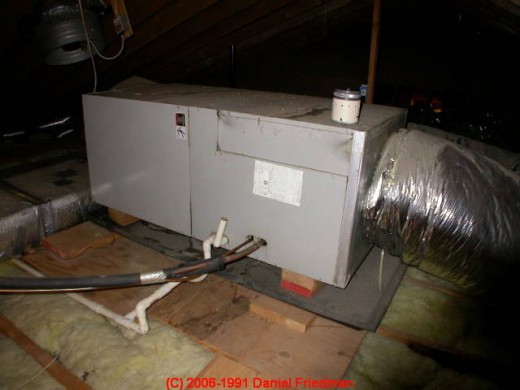
The Checklist - At The Air Handler or Furnace
Of course any tune up for a home air conditioning system should begin at the front door of the home with a hand shake or proper introduction, and followed by some brief questions such as,
"Have you been running your air conditioning yet this Spring?"
If the answer to the above is "Yes," then the next question, logically ought to be something like,
"Have you noticed any issues or problems with your air conditioner?"
The purpose of this is not to switch up any sort of routine that the service tech has laid out for himself, or that his boss has laid out as a template for him to go about such business - it's an opportunity to get to know each other a bit for the technician and customer, and to allow the technician to become aware of any concerns that the customer has, and address them before he puts together his invoice, and collects the fees. If the customer has had to have repairs made during the Fall and Winter, then sometimes these are very important clues and information for the Spring tune up technician to know about.
1.Visual Inspection Of The Air Filter. I always start with the air filters. If the customer says that they have recently changed air filters, or not. I still need to see the thing for myself. If I am the paid professional here, then I need to verify that the air filter is still good enough to be left inside the unit. If the air filter is plugged up with dirt, or partially plugged up with dirt, nearly everything else that I do so far as checking out the system(s) will be a pointless endeavor. If this customer is someone that my company has dealt with in the past, then I should have come prepared with the proper size air filter to replace the air filter if it needs to be replaced. If this didn't happen, then clearly a mistake has been made that I now have an opportunity to correct. I need to know the size and type of air filter(s) here for my records, and the company's records. I fully intend to make a happy customer during THIS visit.
2. Visually inspect The Indoor Coil. I realize, of course, that air filters are not always located directly in front of an air handler's evaporator, or indoor coil. That matters none at all. After inspecting or replacing the indoor air filter or filters, I then need to lay eyes on the evaporator coil. One thing that homeowners often do not understand is the fact that the air filter does not exist to clean the air. The air filter exists for the purpose of protecting the indoor coil from becoming plugged up with dirt, dog or cat hair, so forth and so on. From a visual inspection of the evaporator coil a technician can tell not only if the system is going to perform as it should, but often times a technician will be able to know with some degree of certainty whether or not the system has a refrigerant leak. Most all refrigerant leaks take place in a system's indoor evaporator coil, and 99 times out of a hundred these leaks are not cost effective to fix on site, or elsewhere. Having an evaporator coil that is plugged up with dirt or an animal's hair is another huge issue that is very common, and though that one is fixable, it is nevertheless a very expensive procedure.
I've personally been able to hear a refrigerant leak in a system from taking the time to do a visual inspection of the indoor coil, and from there I've brought the customer (if physically able) into the attic so that the customer could then hear it for themselves, and this made the process of having the coil replaced much less painful for both me and my customer. Of course the situation of actually hearing a leak, and having the customer hear it too would take place later on in the process of a Spring tune up service call, but I'll get into that in a bit.
3. Condensate Drain Line Maintenance. While already at the furnace, and looking at the coil, the next thing that should be done for a Spring tune up, or maintenance service call is maintenance of the condensate drain line. Now, if a home's air handler/furnace is in the attic of the home then without a doubt this maintenance of the condensate drain lines should include maintenance of the emergency drain kine too. If there is no emergency drain pan, then certainly the customer should be approached about having one installed if this is at all possible. Installing an emergency drain pan is NOT about making the company a few more dollars, it is entirely about protecting the ceiling and carpet, or wood flooring of the customer's home.
Of course I realize that some homes might have several systems, and that some might be in the attic, and some might be in closets, I've been in homes so large that they had dedicated mechanical rooms just like commercial buildings and schools often do. Regardless of any of those particulars, one of two things should happen so far as condensate drain line maintenance is concerned.
A. The drain line with an access "T" should have bleach poured through it in order to un plug any "gunk" or algae buildup inside, or
B. Chlorine drain tabs should be put inside the drain pan directly under the coil.
It is always advisable that if the customer is physically able, that a service technician take the time to instruct the homeowner how and why they should be running a cup of bleach through their condensate drain line every so often. Also, if a "T" pvc access is NOT present, then a service tech ought to ask if the customer would like to have one installed for this reason. Using your own judgement to know if such procedures are appropriate, or not, is a must. Pvc fittings and glue, and the bit of labor involved are NOT free, but neither should they be very expensive either. On occasion a technician will run into solid copper pipe as a condensate drain. Of course one would not take the time to open up a copper drain line unless the thing is plugged up already. Also, there is typically no reason to worry about an emergency drain pan's condensate line. Typically, if the emergency pan is dry, as it should be - just move on; but if a emergency pan is wet, then sure, one should take the time to run some bleach through that line as well.
4. Checking The Blower Motor's Amp Draw. Typically it is already very, very hot, and a danger to a technicians health in a customer's attic. Spring in Texas is no joke, so all of these things need to be taken care of in a timely manner. Often being overlooked is the blower motor, but in just a second's time a technician can attach an amp probe to one of the speed wires, and check that number against the data plate's specifications. Of course blower motors rarely go out, so this little bit could easily be skipped on newer equipment, but on older equipment it is a must. Very often the reason for the blower over drawing amperage will be because the blower wheel is full of dirt, and this is a problem that can not be solved in the confines of a Spring tune up. It is very definitely an additional repair that should bring about a higher charge, as it can be time consuming. In any case, a blower motor that is pulling more amperage than it ought is something that should be noted on the invoice, and verbally brought to the attention of the customer.
A HVAC Service Technician At The Condenser
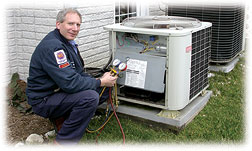
Air Conditioning and Refrigeration Gauges For Sale
The Checklist At The Condenser
After the introduction, and the care of the indoor portion of a home's central air system is taken care of with preventive maintenance, we are now ready to turn the system on - or rather, set the system's thermostat to "cool," as having the fan on was a requirement of checking the blower motor's amp draw.
1. Washing the condenser: To me no Spring tune up should ever be without a thorough washing of the condenser. It matters none at all if this is done with the system running or not. I've never been shocked by washing a condenser, and I've never heard of anyone who has been shocked by washing a condenser. Obviously, one does not wash a condenser with a control panel either loose, or off. It also doesn't matter if the system looks like it is clean, there could well be dirt trapped inside of a double coiled condenser. What is important is that a set of gauges and a type K thermocouple be used in order to know the suction line and discharge line temperatures and pressures, the ambient outdoor temperatures, super heat and sub cooling, and to document these things in a before and after wash manner for personal satisfaction of all parties involved.
Second only to dirty air filters, dirty condensers are the other major problem that is completely preventable by the homeowner, but often totally neglected. Even the homeowners that do take the time to clean their condensers typically ignore the side that is facing their home, and this is always the dirtiest side of a condenser. Depending on the configuration of a condenser, a potential of 1/4 of it's capacity could be sapped just by that alone, sending the home cooling electrical use up by as much as 25%, and if that is combined with a dirty filter, much higher still. By documenting temperature/pressure before and after data a technician can validate his entire visit very easily, and leave a customer with the knowledge that their investment in a Spring tune up was money well spent. In cases of very dirty filters and condenser coils, a customer should be able to see the value of their Spring tune up demonstrated on their next electric bill as well.
2. Checking The Refrigerant Charge. Checking the refrigerant charge is exactly what we are doing while taking down data of a before and after nature in regards to washing the condenser. Now, if the charge is very low to begin with, then certainly the system should be turned off at the nearby disconnect in order to be washed. It does, obviously, take a few minutes with the condenser fan motor running for the coil to be dried out sufficiently for the technician to get a proper read on the refrigerant charge. If the system is very low, then one might start the system without the compressor running by disconnecting the wiring for it, and allowing for only the fan to run until the condenser coil is properly dried out, then killing power, and reconnecting the wiring for the compressor, and starting the unit with gauges connected, and all instruments in place to charge the air conditioning system.
Refrigerant gases are very expensive, and they are becoming more expensive. Refrigerant is never free, and a homeowner should be told that refrigerant is needed before the system is charged. It could be that after being told the price of refrigerant that the homeowner will decline the additional cost for whatever reason, sane or not, that that customer has. Most of the time, as they've called for a tune up, and not the other way around - they will readily agree so long as you demonstrate that you will be weighing the bottle for a correct documentation of refrigerant used. Charging a system is a complicated thing to describe for a customer, and is something that can only be legally done by one with a license to do so. Because only a person with a license to charge a unit has any business attempting to do so, I'll not describe that further. Suffice it to say that I have very often found units that had been OVER charged by persons either licensed, or otherwise, and of course, this too is something that must be attended to for a system to be properly tuned up for the peak performance that a homeowner and his or her electric bill will want to experience as the temperatures steadily increase in the days and months to come.
3. Checking The Amperage Draw Of Both The Compressor, and The Condenser Fan Motor. After the condenser is properly charged with refrigerant, if adjusting the charge was even needed, then a service technician should take the amperage of the compressor while it is running, and then kill the system at the disconnect, wait a few minutes, and then take the locked rotor amperage draw as he re starts the condenser. I've several times over had occasions when having this information helped to solve problems. If the run load amperage is high, then there is a good chance that the compressor has internal mechanical problems that can't be solved, and of course it may be overheating. If the locked rotor amperage is too high, then often times a customer, if asked about such things, will tell you that when the condenser starts their lights inside the house dim momentarily. If such is the case, then the customer will probably be interested in having a hard start kit installed, which will often solve that problem, and extend the life of the compressor. Of course installing a hard start kit is NOT cheap or free, but is an additional part or two (depending on the style of hard start kit) off of the service truck that had to be bought by a licensed professional with or under a contractor's license.
Of course the compressor is not the only electric motor present at the condenser, the much more visible condenser fan motor ought to be looked over as well. What often surprises me is that there are tons of people out there who are bright enough to replace an electric motor, but seemingly not bright enough to replace it with one of the correct horsepower. I've spotted more than one dying fan motor of the wrong size, and a few of the right size as well just by taking the minute or so that it takes to put an amp meter onto the correct wire, and looking at the condenser's data plate. Again, this information, when documented on a Spring tune up invoice will clearly show a customer that signed such an invoice later on that they did, in fact, know that there was a problem developing. I've known of devious or just disappointed homeowners who will take a Spring tune up, and try to use it against the service company later on in the Summer when things have gone badly for them.
"You said our air conditioning was fine!"
As if other problems couldn't develop at any time! Despite a signed Spring tune up invoice, an invoice with proper notations of things like every motors amperage draw will not only protect the service technician, and his company, a devious or angry customer will generally back down from accusations when told,
"You signed the invoice where our technician documented that these problems seemed to be developing, and it looks like you also declined to have a hard start kit installed, and to have your blower assembly cleaned as well. . . "
Of course "bad" or "troublesome" customers are the exception, and not the rule - just as is the dishonest technician, or the parts pushing service company is an unpleasant exception to the rule. The thing is that service companies one and all sometimes carry a negative stigma in the minds of a few customers, who then make every technician that they ever meet suffer in turn, as if being crooked and selling parts that aren't needed were something that was taught to us in school.
It Is a Fine and Wonderful Feeling To Leave A Residence With An Efficiently Running Central HVAC System
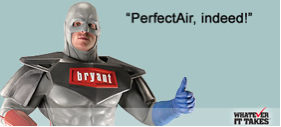
The Finale, Verifying The "Delta T"
Now, with clean filters, and assuming that the evaporator is in't plugged, the condenser having been washed, the charge being either correct, or corrected, the condensate drain verified to be unplugged, and motors all drawing amperage between normal parameters - it's time to check the temperature drop, otherwise known as the "Delta T." For this we will be running the system in cooling mode, and using the temperature measuring devices and instruments that we have available to demonstrate that the system is performing at a level that is acceptable.
This is something that is truly simple. It is something that any customer can and should do in order to verify that their system is working correctly, or in order to know that it's time to make a call for their service company to schedule a visit. All that we are doing here is measuring what the temperature is inside the house, and verifying that the supply air temperature is between 15 and 20 degrees LOWER than is the temperature inside the house. If the system is fairly new, then there is generally no reason why the temperature drop should not be twenty degrees lower than the home's temperature. If a system is 15 or more years old, then 15 degrees difference between the supply temp, and the indoor temperature may be the very best that is possible without having to have the evaporator coil cleaned, and the blower assembly cleaned, and the condenser washed with either the acid cleaner that is sometimes still used, or the equally dangerous alkaline cleaners most often used today. Of course sometimes there are other factors involved as well, such as a homes attic needing more insulation, or attic fans installed, and other procedures that a homeowner needs, but often doesn't want to believe that they need - but aren't you glad you had all this done, got to know an honest, hard working technician? That's great, now lets get your check, or credit card nimber, or will you be paying cash today?


